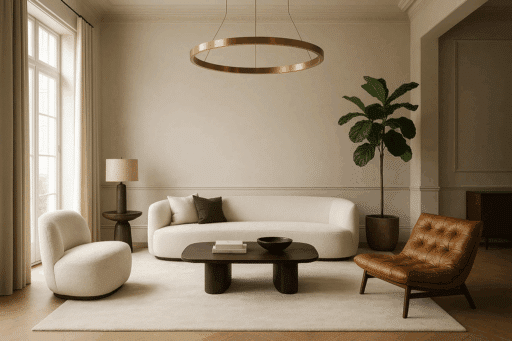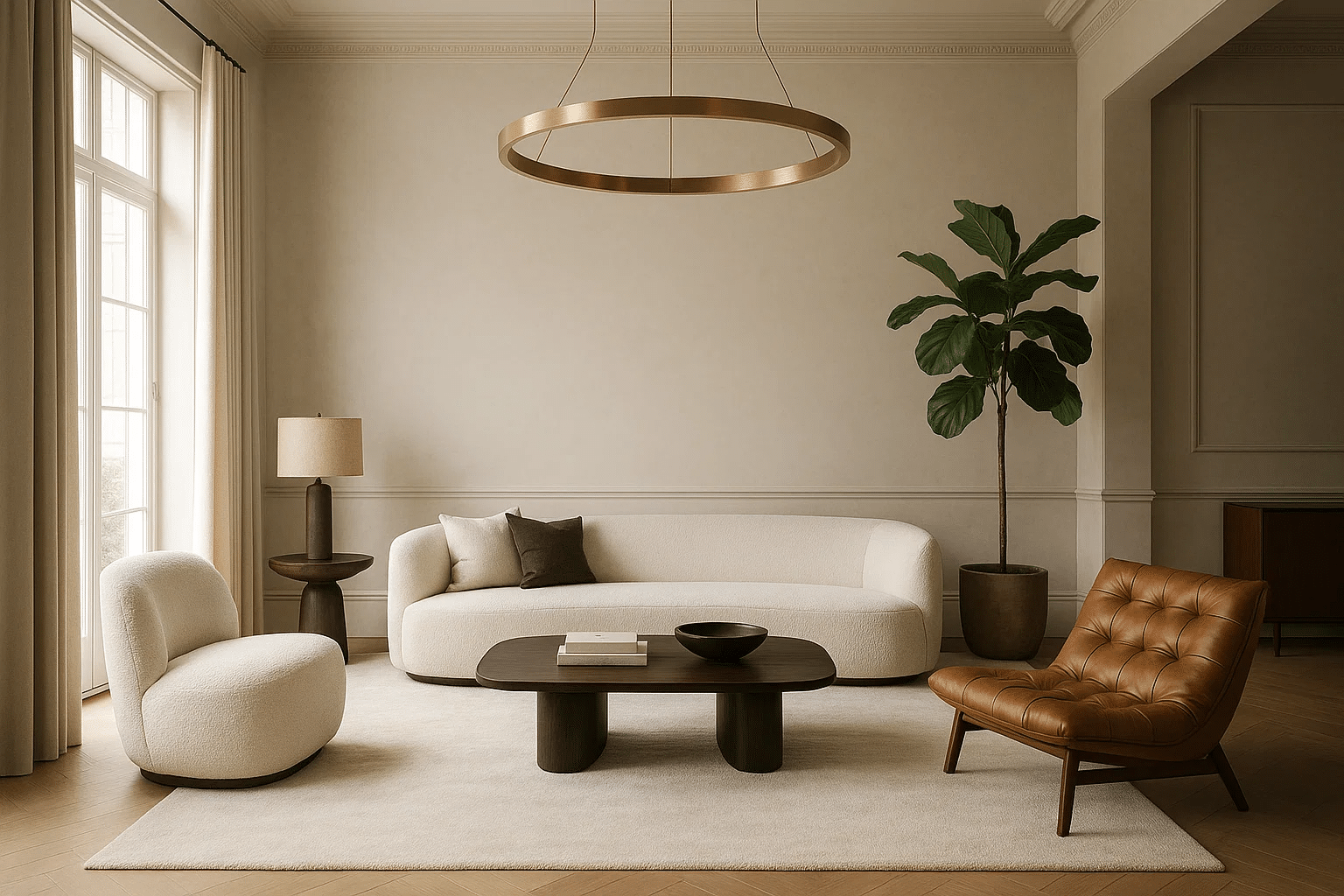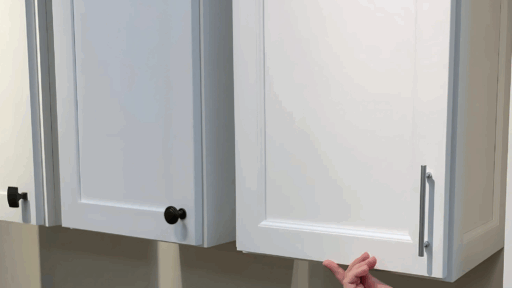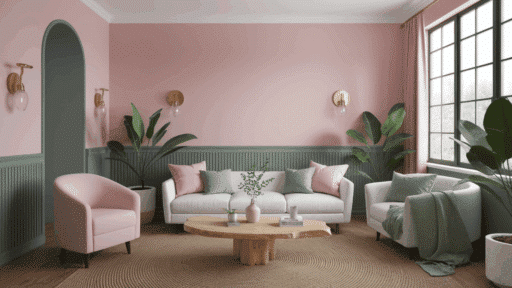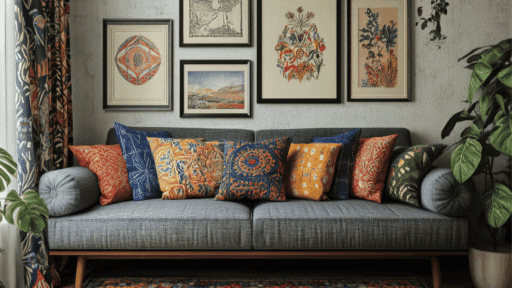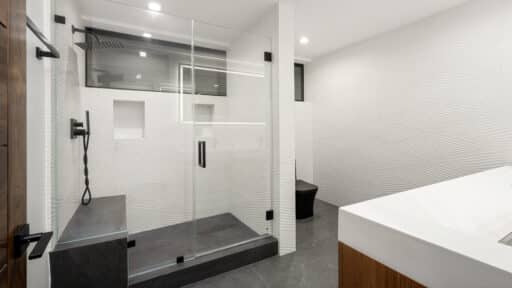A beautiful space is more than just a collection of stylish furniture and chic accessories. It is a carefully curated environment where every element, from the largest sofa to the smallest decorative object, works together in perfect harmony. This visual balance and harmony are not accidental; instead, they are the impeccable result of a masterful synthesis of two essential principles: proportion and scale.
Both are closely related but distinct concepts, and they form the subtle foundation on which a harmonious interior design is based. Implementing them is the key to transforming a room from a collection of disparate things into an enjoyable space.
Scale vs. Proportion
At a foundational level, scale refers to the size of an object in relation to other objects in the room, the room itself, and the human body. It’s about context and hierarchy. A grand, oversized chandelier in a small entryway might feel overwhelming and out of place, while the same fixture in a large, double-height living room would be a breathtaking statement piece.
Scale dictates how we perceive a space, making it feel either cozy and intimate or vast and grand, regardless of its actual square footage. For example, a room with a high ceiling can accommodate larger furniture and wall art without feeling cluttered, while a room with a low ceiling benefits from smaller, more compact pieces that don’t visually shrink the space.
Proportion, on the other hand, is about the dimensional relationship between different parts of a single object or between different objects within a composition. A beautifully proportioned bookshelf, for instance, will have shelves and compartments that are a comfortable height and width in relation to each other and to the overall unit.
If a room has two armchairs and a coffee table, the proportion is used to ensure that the height and width of the table are in a pleasing ratio to the chairs, creating a sense of balance and visual continuity. The classic Golden Ratio (1.618:1) is a timeless example of proportion, a mathematical principle found in nature and art that has been used for centuries to create aesthetically pleasing compositions.
The Synergy of Scale and Proportion in Practice
The true artistry of interior design lies in the synergistic application of both principles. A piece of furniture can be perfectly proportioned within itself — with legs of the right length and a seat of the right depth — but if it is the wrong scale for the room, the entire design will feel flat. For example, a dining table with a beautiful, harmonious shape might be a proportional success, but if it’s too large for a small dining room, it will create a cramped and visually unbalanced space.
To achieve harmony, designers often begin by determining the correct scale for the room. In a large living room, this might be achieved by using one large-scale sectional sofa to anchor the room and prevent it from feeling cavernous. In a small room, a designer will use smaller-scale furniture with slender legs to create a light and airy feel.
Once the foundational scale is set, the focus shifts to proportion, selecting and positioning objects in a manner that their sizes are in harmony with one another. This could involve placing a large piece of art above a sofa that occupies roughly two-thirds of the wall space or having decorative items in odd numbers to create an energetic and visually interesting space.
Using Scale to Create Focal Points and Visual Hierarchy
A thoughtfully organized room features a clear hierarchy, with certain elements taking center stage. This can be achieved by carefully selecting the scale. A prominent lighting fixture with a unique design can be the dining room’s focal point, with the rest of the furnishings scaled down to complement it. A large piece of artwork or a big hearth can be utilized likewise.
With the manipulation of scale, you can create a visually interesting impression. For example, placing just one or two large-scale objects intentionally among a room of small objects can make an interesting contrast. It’s a way to prevent a boring space while introducing a touch of elegance. But overuse of contrast between scales may lead to visual confusion, while a consistent scale results in a dull and uninspiring space.
The Role of Proportion in Creating Cohesion
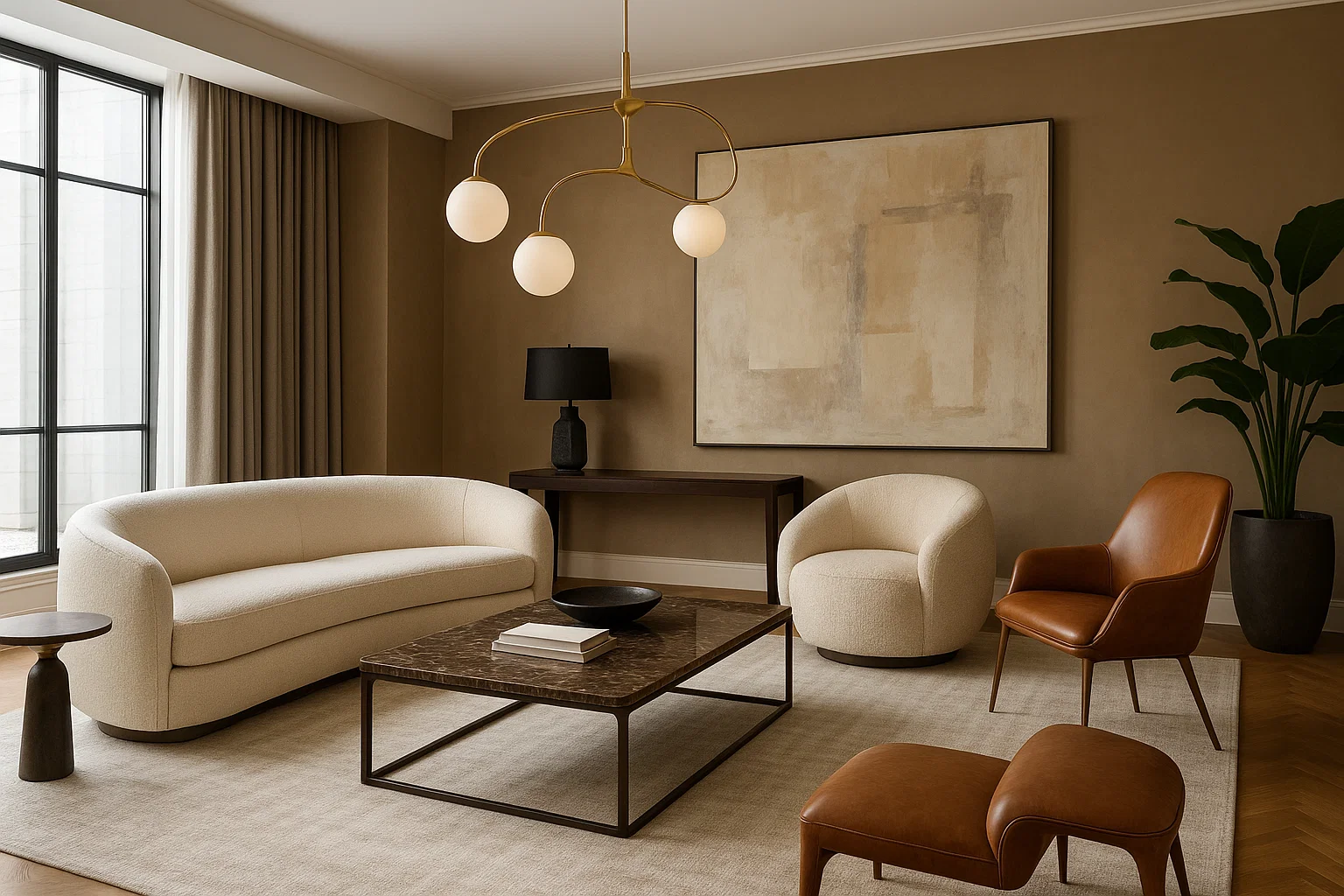
Proportion is what ties it all together. It is what causes a room to appear intentional, rather than a chaotic mess of furniture. Proportion also plays a crucial role in creating functional and comfortable spaces. Furniture must be proportionate to the human body, which is a term known as ergonomics. A chair that is too deep or a table that is too high, regardless of its style, will fail as a functional object. A room’s layout also relies on proportion.
Designers consider the “negative space” — the empty areas between furniture — to ensure a comfortable flow of movement. Over-stuffing a room with furniture, even if each piece is the correct scale for the space, can be a failure of proportion, leaving the area feeling cluttered and making it challenging to navigate.
Common Mistakes and How to Avoid Them
Ignoring the Room’s Dimensions: A large, plush sofa in a tiny apartment will not work, just as a small, delicate coffee table will get lost in a spacious living room. Always measure your space and the furniture you intend to buy.
Using Too Many Small Items: A room filled with many small pieces can feel visually chaotic and cluttered. Instead, opt for a few larger, statement items and complement them with smaller accessories. This creates a balanced visual weight and a more sophisticated look.
Mismatched Lighting: A chandelier that is too small for a dining table or a floor lamp that is dwarfed by a sectional sofa can throw off the entire feel of the room. The size of your lighting should be in proportion to the objects and spaces it illuminates.
Forgetting Human Scale: Always consider the people who will be using the space. Is the dining table comfortable for seating? Can each family member easily reach items on a shelf? Furniture and accessories must be proportional to human dimensions to ensure comfort and functionality.
Scale and proportion are not abstract design principles; they are the fundamental elements that every interior designer uses to create spaces that are both functional and visually appealing. By paying close attention to the size of things in comparison to their environment and to one another, a designer can create a sense of harmony and evoke specific emotions. It’s the command of this art of conscious design that allows a room not just to look decorated, but truly designed.

